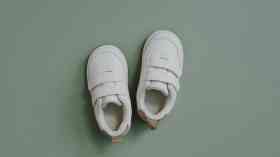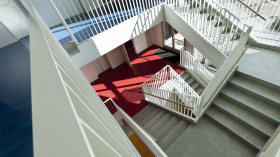The business of education
 “That’s such a great idea, you ought to sell it to other schools,” is frequently heard by business managers. Yet, all too often, it is followed by someone saying: “If only our school had time to develop it.”
“That’s such a great idea, you ought to sell it to other schools,” is frequently heard by business managers. Yet, all too often, it is followed by someone saying: “If only our school had time to develop it.”
Time can be the main barrier to developing a great idea, in any academy or school.
The process of conversion also has a significant impact on the business management function within a new academy, including challenges associated with accounting and reporting, concerns about insurance or other back office issues.
Whatever its status, all too often innovation fails to get beyond either the individual department, academy or school.
Encourage networking
The Independent Academies Association (IAA) and the Association of School and College Leaders (ASCL) have joined forces to work with IAAS (Independent Academies Assured Services) to develop a Quality Mark for services and to encourage networking of schools and academies to share and build good and effective practice.
The IAAS Quality Mark does what it says – it marks out and recognises companies that are providing the highest quality and best value services to schools. The Quality Mark helps academies and schools of all types to be in a position to be able to procure and purchase supplies, goods and services from organisations and companies that have a proven track record. And the IAAS Quality Mark is already doing even more than this.
Drive improvement
The government is looking to schools and academies themselves to drive improvement and to lead the system by sharing and building upon their most effective practices.
In future, there may well be new responsibilities for all good and outstanding schools and academies to work with other schools and to lead school improvement within and between schools – quite a daunting challenge. Yet meeting this challenge is easier than you might think. Putting the right support in place can allow schools to not only contribute to system leadership but also help improve their bank balances.
IAA and ASCL are leading national organisations involved in academy and school-led innovation. An important part of their role is to work with their commercial partners to find new opportunities to support school-led innovation in services.
IAAS has developed a free service for schools that helps them bring an idea to market by removing some of the more difficult hurdles.
Tony Richardson, chair of IAAS, says whilst overcoming time pressures is difficult the results are very worthwhile and can really benefit individual schools.
Richardson says: “I have worked with incredibly dedicated, professional and impressive staff who are involved in developing CPD training. But they often struggle with a range of hurdles, making learning and sharing with other schools difficult. “
Alleviate time challenges
Richardson explains that IAAS came up with the idea of offering services within the local area and regionally to reduce travelling time. This can play a part in helping alleviate time challenges, which was a key aim of the IAAS website (www.iaa-s.co.uk) to ensure schools can find and sell locally, for example, CPD being provided in twilight sessions.
IAAS can guide a school through the requirements to trade with other schools and academies at minimal risk. This includes helping develop quality assurance and complementary processes to drive continuous improvement.
This approach can help make sure risks are monitored and managed.
The potential for school-to-school and academy-to-academy ‘trading’ is enormous and Richardson believes the market has the scope to grow very rapidly. He describes how he has seen academies and schools planning and exploiting these new opportunities, feeding income back into their own institution to the benefit of their students and community.
Richardson added: “I visited one rural school that had the most impressive horticultural business growing plants. There were significant benefits to the school in what it was doing and these had real potential to be shared, while the business provided a revenue stream to the school. This business really suited the school’s context as it was a rural institution with a lot of land, which in the past really hadn’t been effectively and profitably used. The school developed the quality and impact of its own enterprise education expertise which it used to share with others and produced significant income.”
In other cases, whilst schools have developed and sold great ideas and ‘products’ such as online learning resources, doing this in a sustainable and manageable way can sometimes prove a huge challenge and can sometimes prove a huge challenge and can distract the school from its core purpose.
In these situations, IAAS is able to help by finding an IAAS Quality Mark supplier to come in to run a venture or part of a venture, so that the school could still gain a revenue stream whilst ensuring its focus on its core purposes.
IAAS is keen to help spread best practice and provide a platform for schools and academies to lead improvement. It has an online forum designed to allow people to discuss ideas; moreover, if there is a demand, it can host regional meetings to help develop ideas with suppliers’ support.
Drive down costs
Another advantage is that schools and academies growing their own services can also drive down costs and change the nature of the supplier market. Options include swapping services through reciprocal agreements and schools can work as a group.
Potential constraints may always be present but there are ways around these challenges. While for many staff and business managers the first step towards developing a new idea can be the hardest one, being able to call on a consultancy with the right skills and knowledge can make all the difference. Great schools know how to innovate and develop best practice in teaching and learning, and to spread and embed these innovations systematically. They not only have great ideas in the first place – based upon what really works – but they develop a well thought-through business plan, clear processes and good back office functions to support their improvement cycle so that innovation becomes accepted and normal.
So the message is: the IAAS network can help schools and academies to learn from each other, to share what works best in teaching and learning and, crucially, to embed change and practice to make a real difference to our children and young people – supporting great teaching, extending opportunities, enriching learning and creating the time to learn.
Further information
Tel: 01737 824048
www.iaa-s.co.uk
enquiries@iaa-s.co.uk
Latest News
30/10/2025 - 01:28
In the wake of the Raac crisis, the DfE spent £5 million on research into the condition of school buildings, which is due to conclude in spring 2026.
30/10/2025 - 01:09
Malmesbury Primary School in Wiltshire has submitted plans for a major expansion, funded by entrepreneur James Dyson.
30/10/2025 - 00:55
Monday's Every Pair Tells a Story campaign to protest to highlight the national crisis in SEND provision.
29/10/2025 - 09:19
Estimated data from the Department for Education reveals that 470,000 pupils under 16s use local authority funded transport to get to school.
28/10/2025 - 09:29
Timeline set for removal of Reinforced Autoclaved Aerated Concrete







